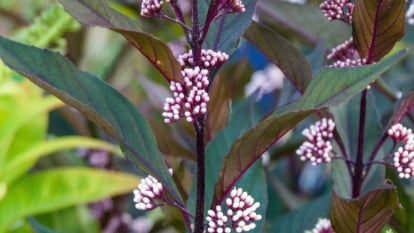Use it to welcome pollinators and songbirds to your landscape. Add form and structure to your woodland garden. Plant one along your hedgerow or spice up your winter landscape with some irresistible color. There is no shortage of ways to use and appreciate Pearl Glam®.
One of the best things about this variety is that it’s easy to grow. Many highly ornamental plants require a lot of fuss and regular maintenance. With Pearl Glam®, once you plant it and get it settled into its new home, you get to sit back, relax, and enjoy the show.
Without further ado, let’s dig right in and get to know the Pearl Glam® beautyberry. This shrub is certainly worthy of serious consideration for your next landscaping project.
Pearl Glam® Beautyberry Overview
|
|
|
Plant Natural History
Pearl Glam® beautyberry is a hybrid between two other species: the purple beautyberry (Callicarpa dichotoma) and the Kwangtung beautyberry (Callicarpa kwangtungensis), both of which are native to Asia.
This hybrid was developed in the United States and has become very popular commercially. It is favored for its showy purple-tinted foliage and large clusters of brightly colored fruits. It is more readily available as a garden plant than either of its two parent species.
Characteristics
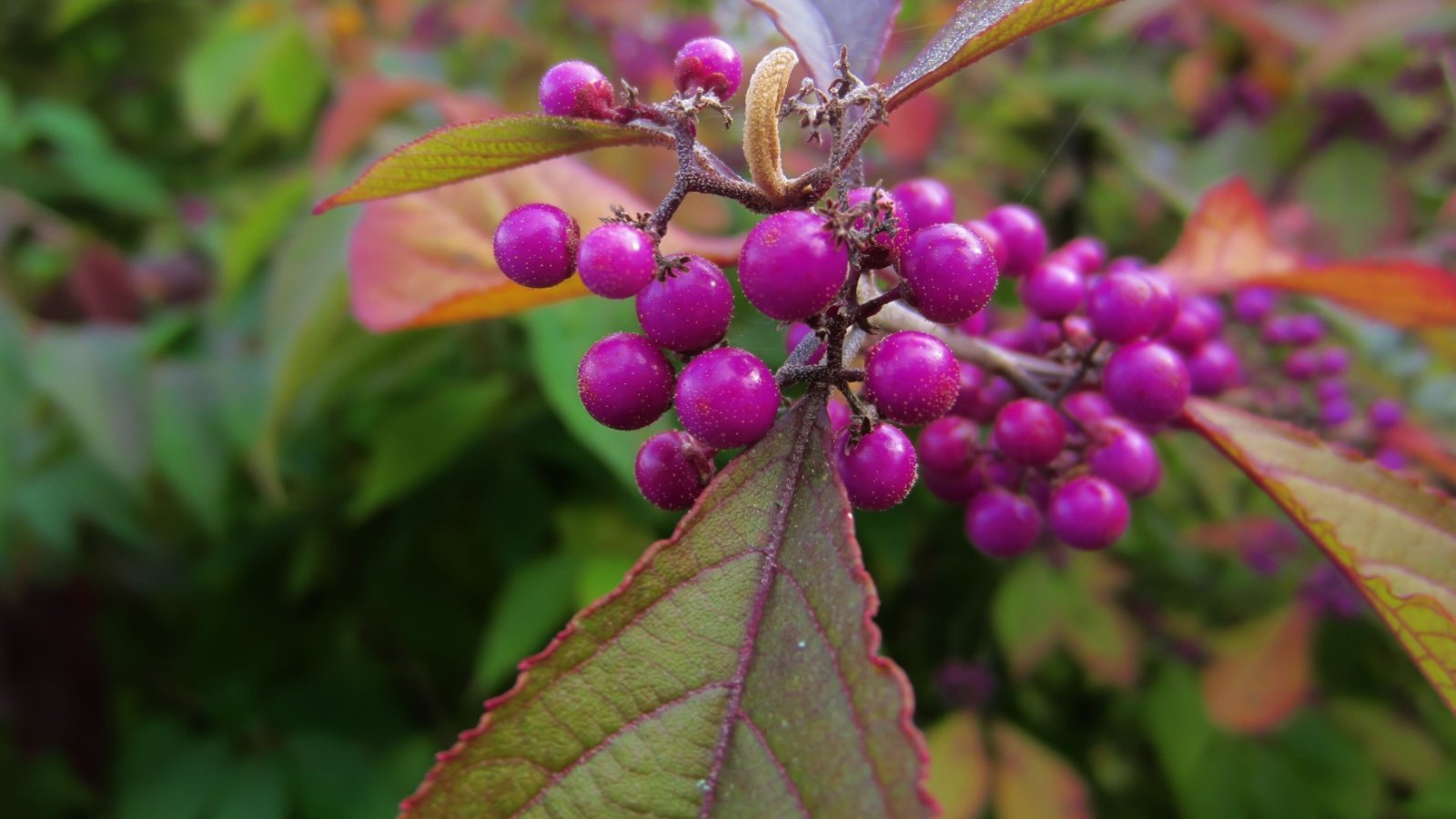
The Pearl Glam® beautyberry is a small to medium-sized deciduous shrub that reaches a mature height of four or five feet tall and three to four feet wide. It develops an upright to rounded form for an attractive compact landscaping shrub.
This plant blooms in late spring or early summer with a profusion of tiny pale pink to lavender-colored flowers. The flowers are small and close to the stem and attract pollinators.
After flowering, pollinated flowers develop into small green berries. These densely rounded clusters of berries slowly mature through the summer, finally becoming bright lilac by early to mid-fall. The fruits are extremely showy and make an appealing display. After the leaves drop in the fall, the berries often persist well into winter.
The native American beautyberry has uniformly green leaves, but Pearl Glam® sports showy maroon-tinted leaves with maroon veins. The leaves are opposite along the stems and oblong with pointed tips and finely toothed margins. In the fall, the leaves change to yellow and orange.
Propagation
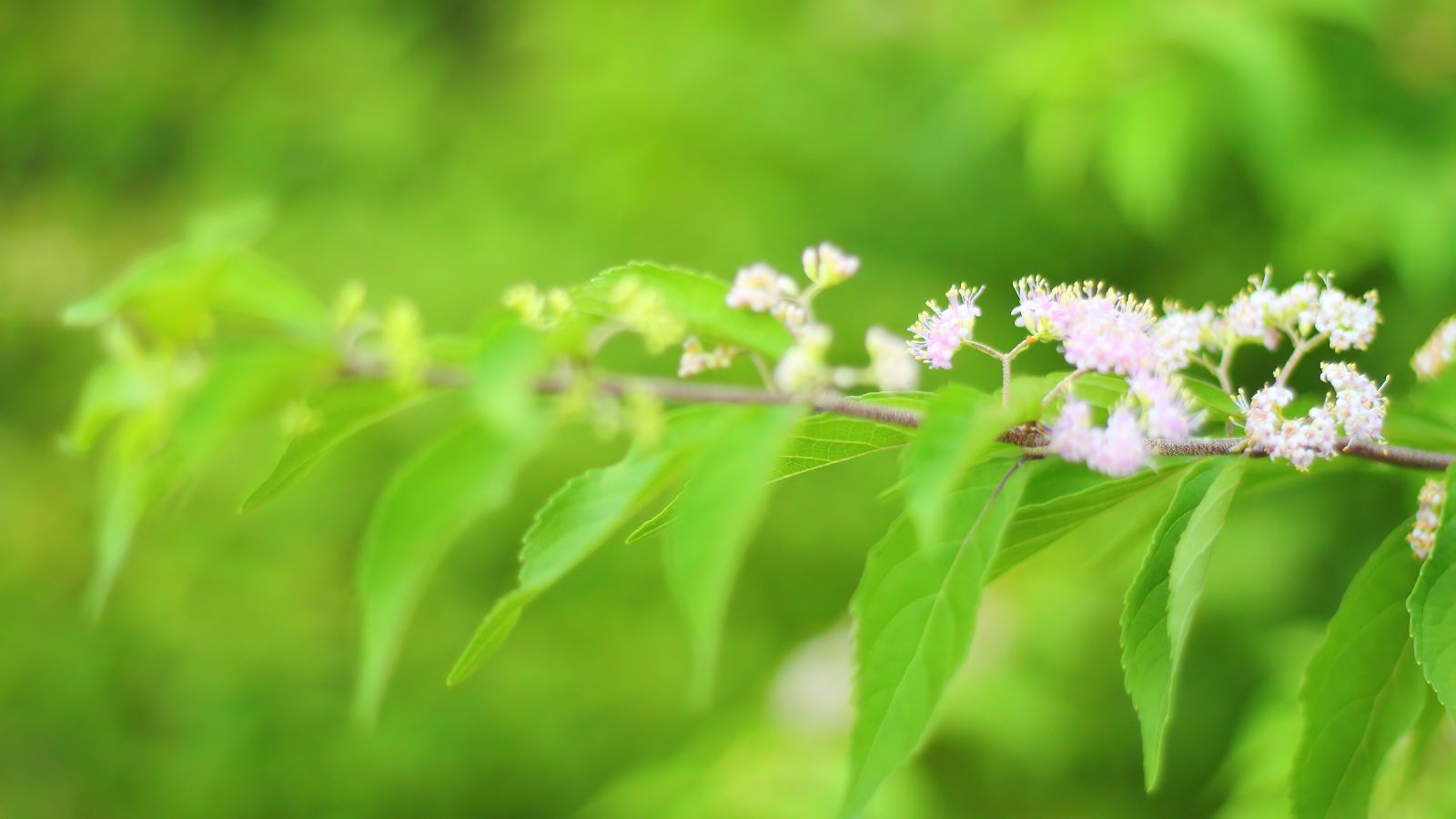
Since this shrub is a hybrid, you won’t be able to propagate it from seed. The seeds from this hybrid are generally infertile so, unlike the natural species, they won’t germinate in your garden. You can, however, take stem cuttings and propagate your Pearl Glam® beautyberry with this method.
Cuttings
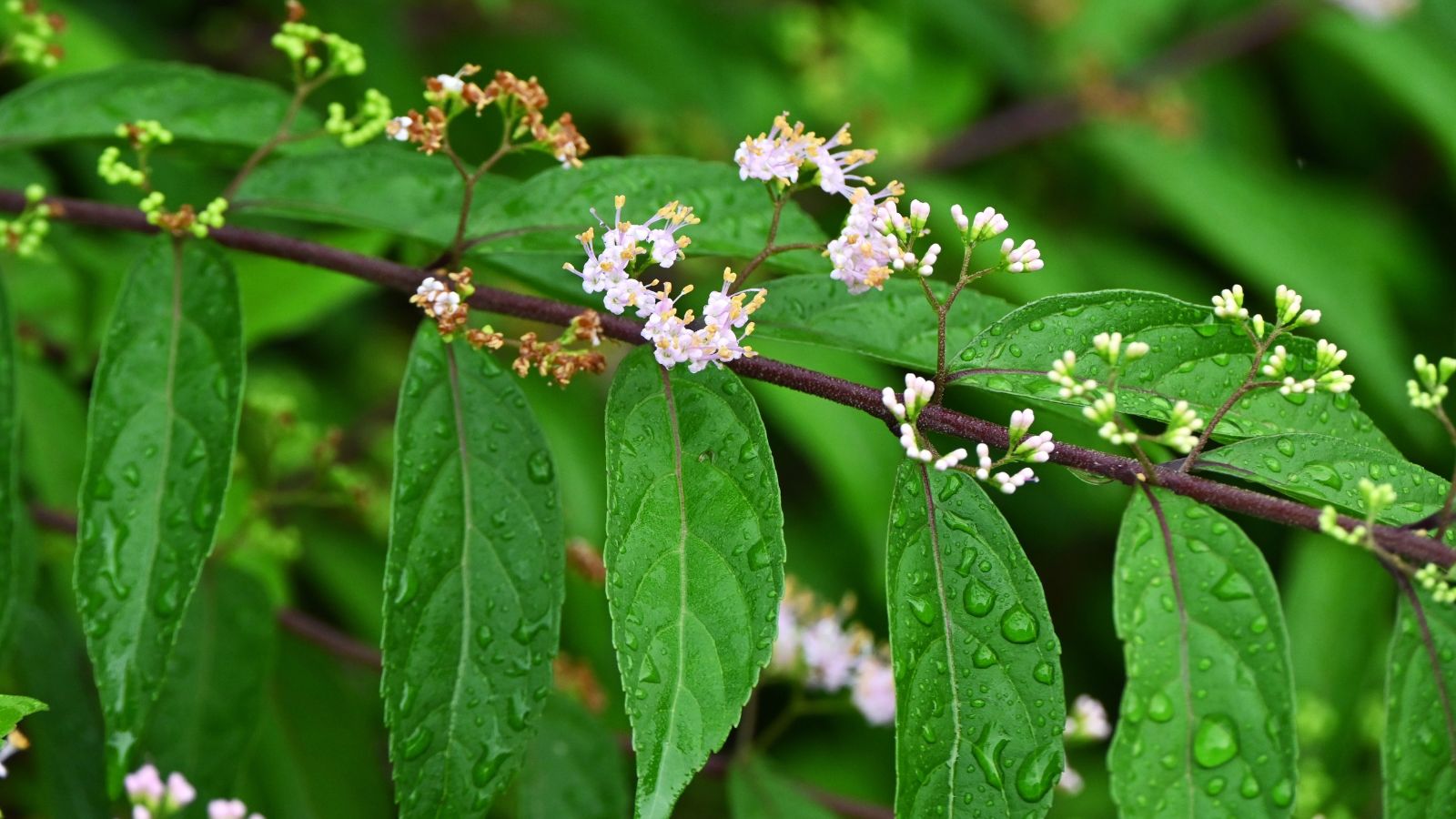
Propagation from softwood cuttings is easy. Use a sharp handheld pruning tool to take cuttings in the spring after the plant shows fresh spring growth but before it starts to flower. Take a couple of cuttings between four and five inches long. Remove the lower set of leaves and tip the bare stem in a rooting hormone to stimulate fresh root growth.
Place the cutting in a pot of moist potting soil. Keep the cutting in a protected location and keep the soil uniformly moist so it doesn’t dry out. Within a few weeks, tiny new roots will develop and the cutting will show fresh leaf growth.
Keep the cutting growing in a pot until the plant has a chance to grow a healthy root system. You can transplant it in a protected location and keep it moist or transplant it to a larger pot for the summer, then transplant it later in the fall when the weather cools again.
Transplanting
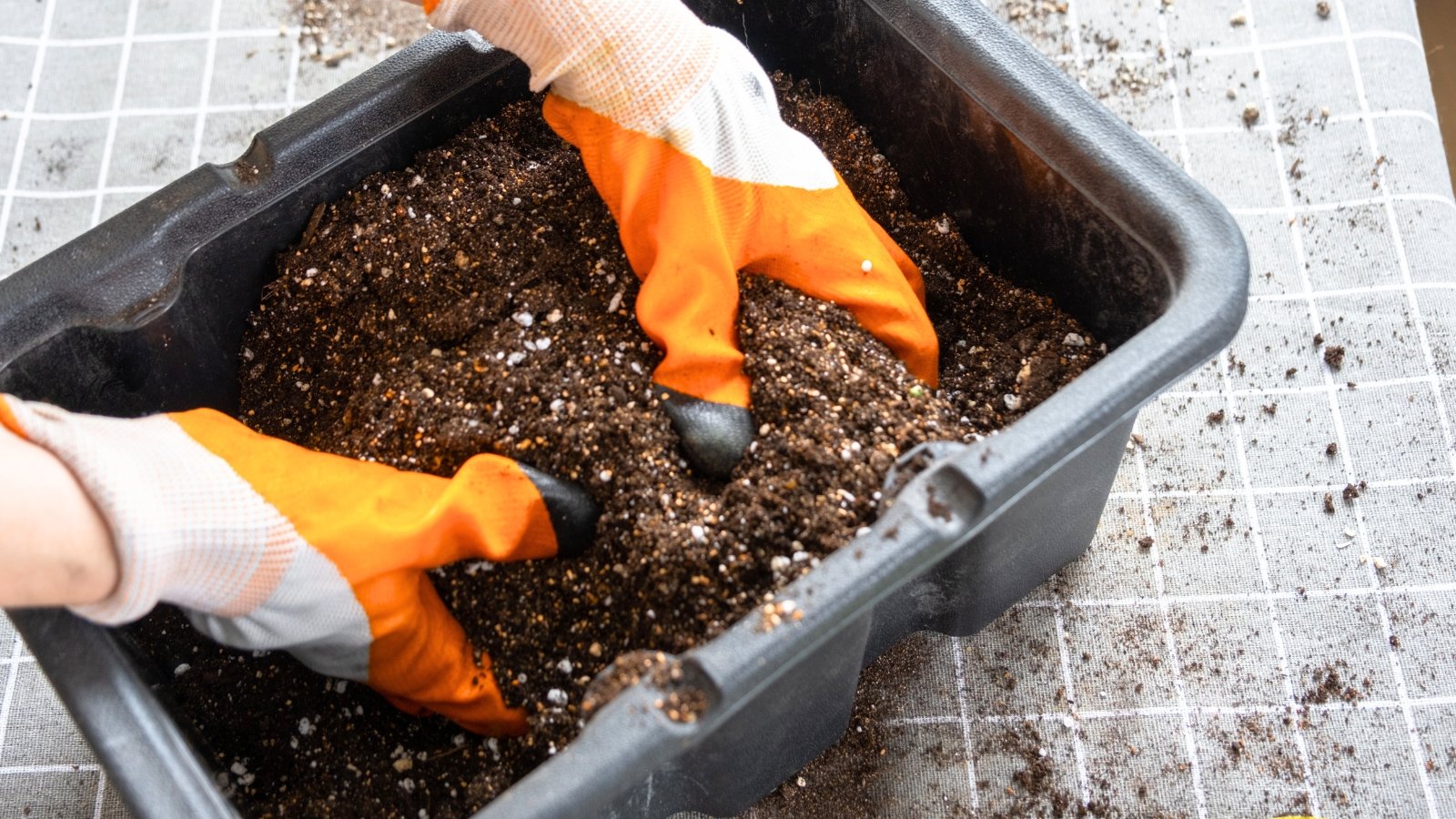
Spring and fall are the best seasons to transplant a bush. If you can, choose a day that’s cool and overcast. Prepare the transplanting site by clearing away any weeds and competing vegetation and loosening the soil. While you’re working with the soil, you have the ideal opportunity to add any soil amendments needed to improve drainage or nutrient quality.
At the prepared site, dig a hole slightly wider and deeper than the pot in which the shrub is currently growing. Carefully remove the plant from its pot and transfer it to the hole. If the roots are bunched and twisted around in the pot, gently loosen them and spread them out a little.
Now arrange the shrub in the hole so the main stem matches the soil level as it was in the pot. Refill the hole with soil all around the plant roots, and tamp it down. The soil level around your plant should be approximately level with the surrounding soil rather than sunken or raised dramatically in a mound.
With the shrub in place, give it a thorough watering. Make sure you’re offering enough slow and steady water so it soaks down to the roots rather than just running off the surface. Keep your plant well watered so the soil stays moist for several weeks after transplanting to help it adjust and encourage fresh root development.
How to Grow
The Pearl Glam® beautyberry is very easy to grow and low maintenance. You’ll need to provide a good site and then simply enjoy its colorful beauty!
Sunlight
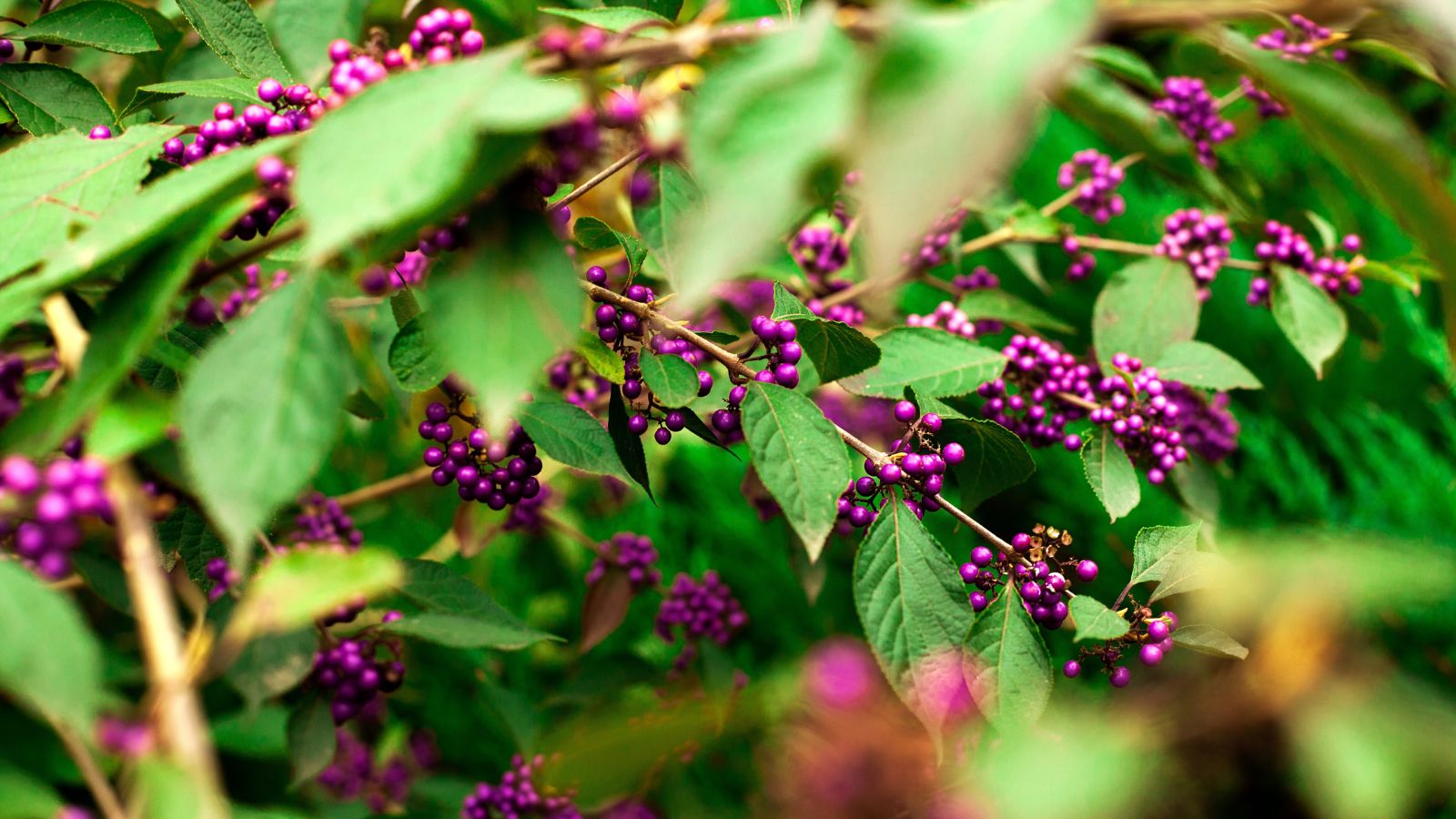
Pearl Glam® and other varieties enjoy full sun to partial shade. They tolerate moderately heavy shade but won’t grow as fully or flower as profusely as those grown in full sun. Find a location where your plants receive at least two hours of bright sunlight each day.
Water
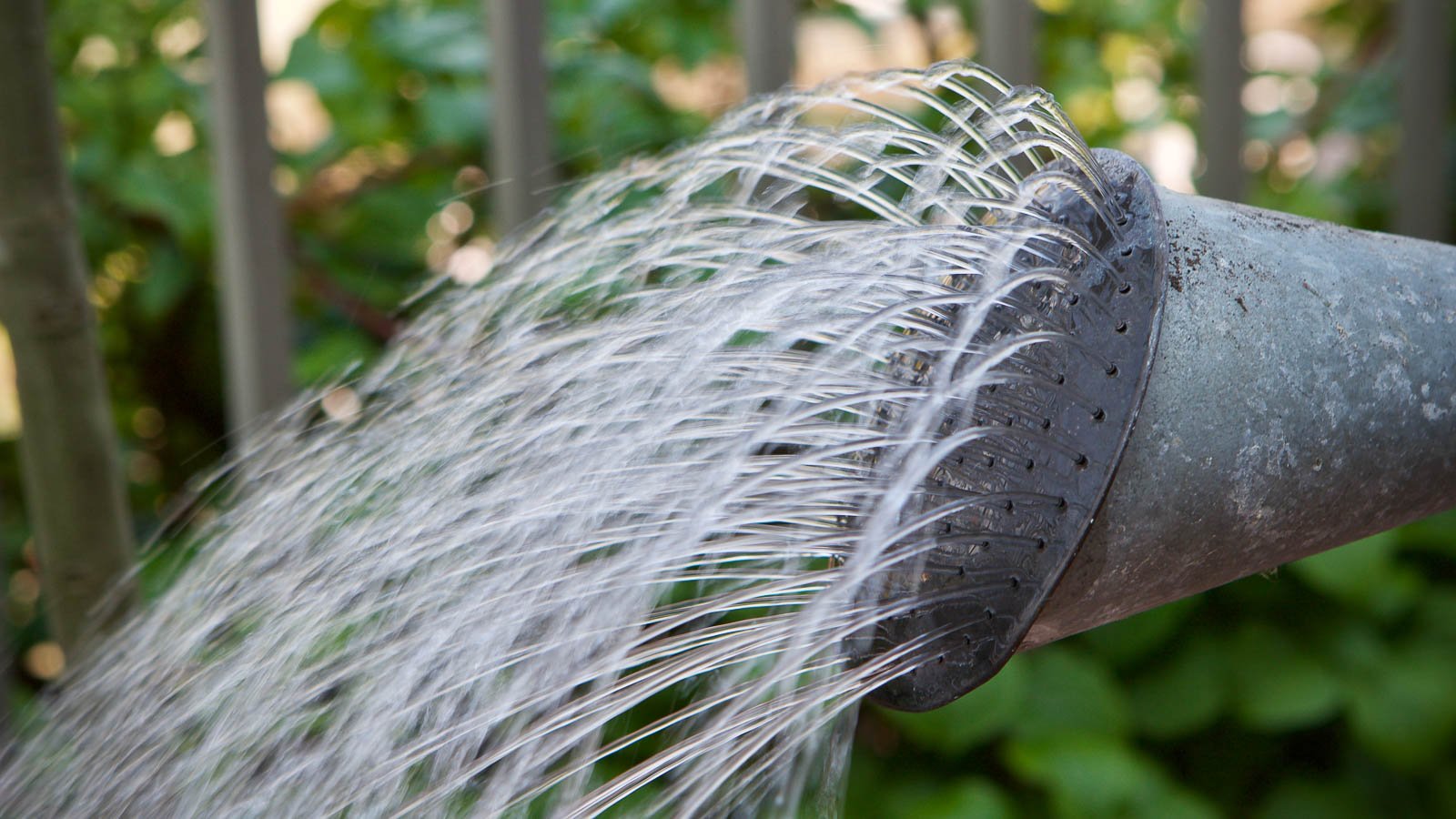
This hybrid is adaptable to a variety of moisture levels. It appreciates moist soil but is moderately tolerant of occasional dry soil conditions. Once established, it’s unlikely you will ever need to offer extra irrigation.
Soil
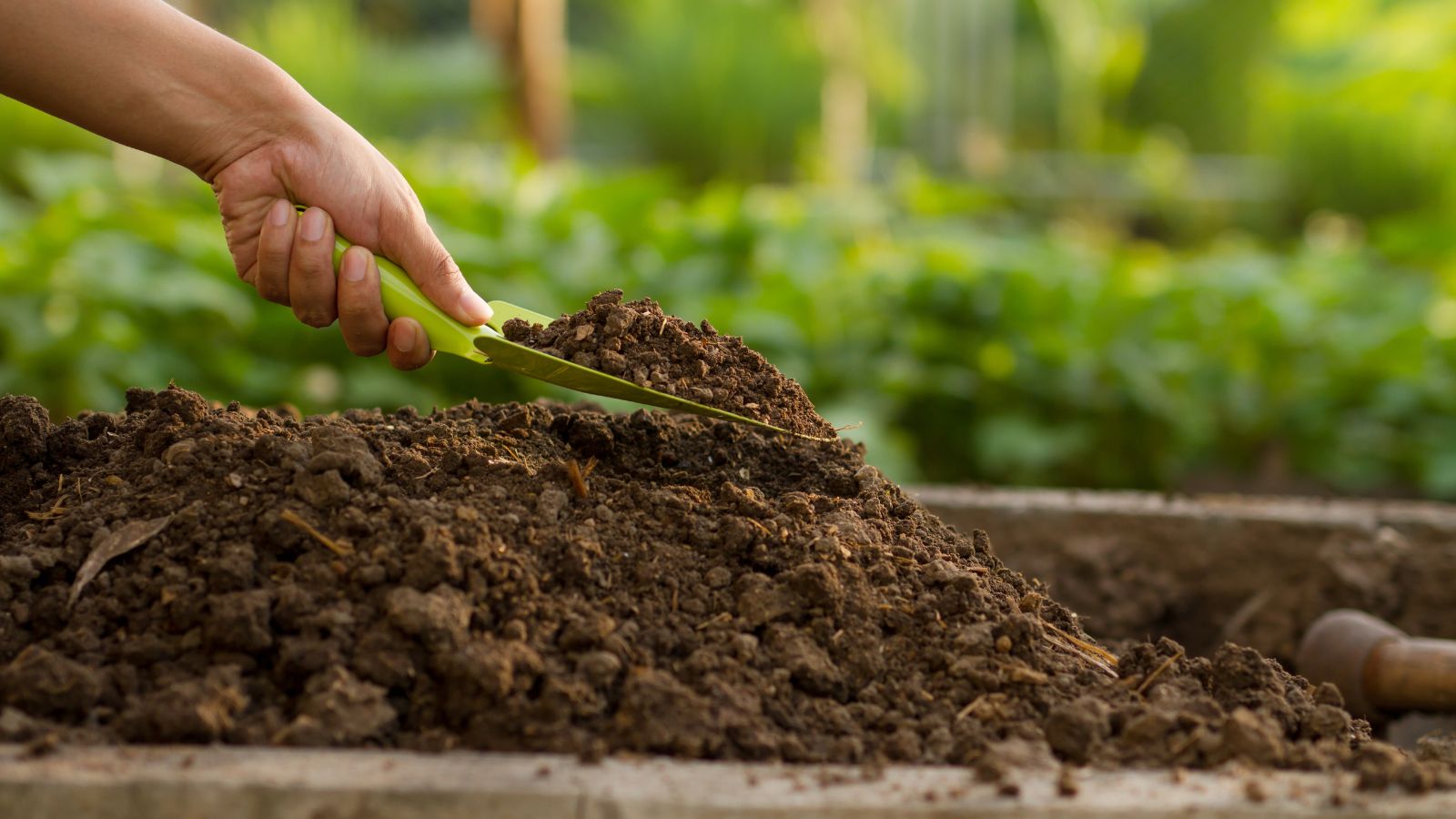
This plant does well in average-quality soil and appreciates fertile soil with plenty of organic matter. If your soil is particularly dry and sandy, add some compost at the time of planting to boost soil nutrients and water-holding capacity. The most important soil quality is that it’s well-drained. Don’t grow beautyberries in soggy, saturated soils.
Climate and Temperature
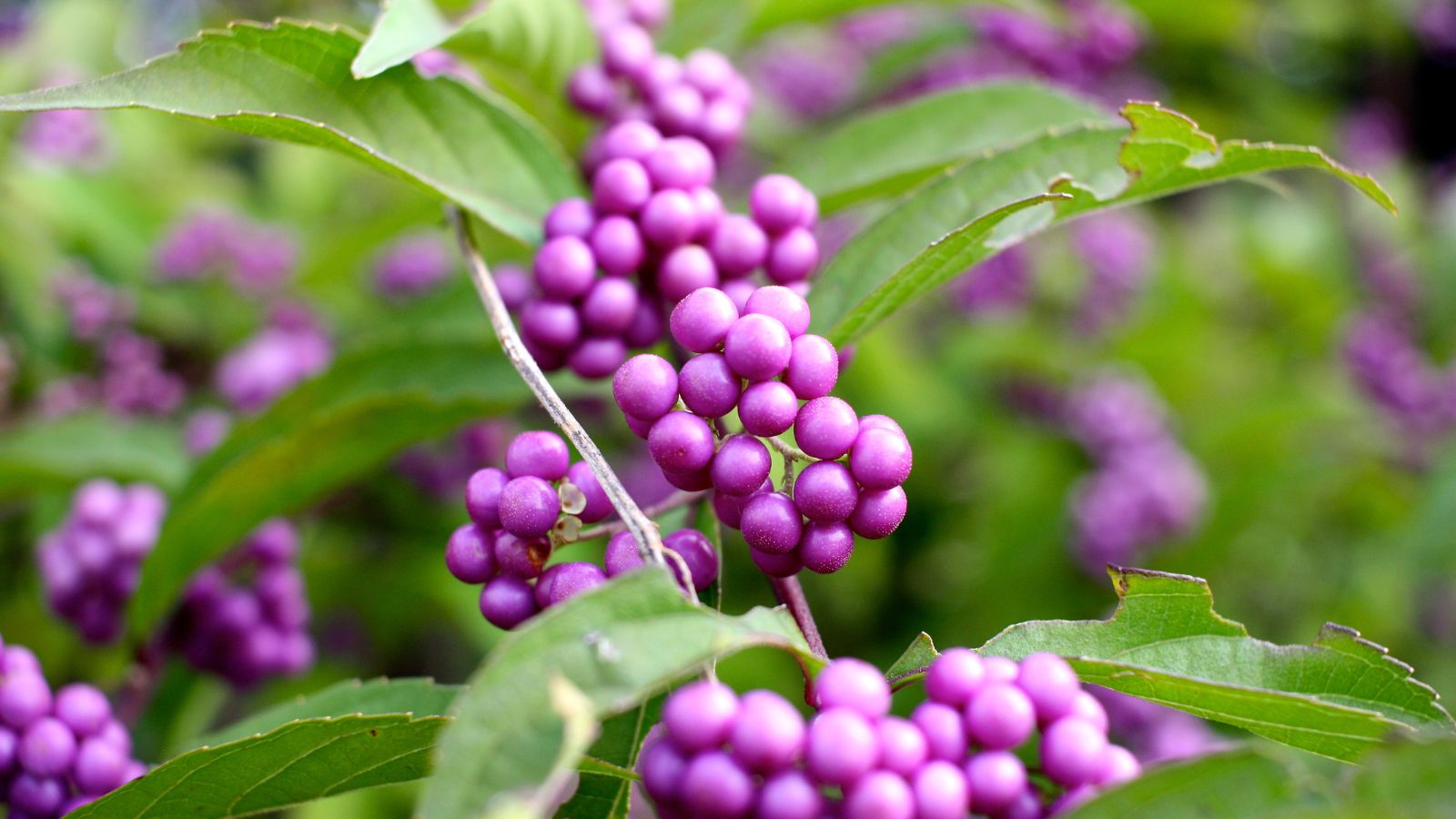
Pearl Glam® beautyberry is hardy in USDA Plant Hardiness Zones 5 – 8. It prefers a moderate to warm climate and won’t survive winters colder than Zone 5. It tolerates freezing temperatures and mild to moderate winters, as well as long, hot, humid summers.
Fertilizing
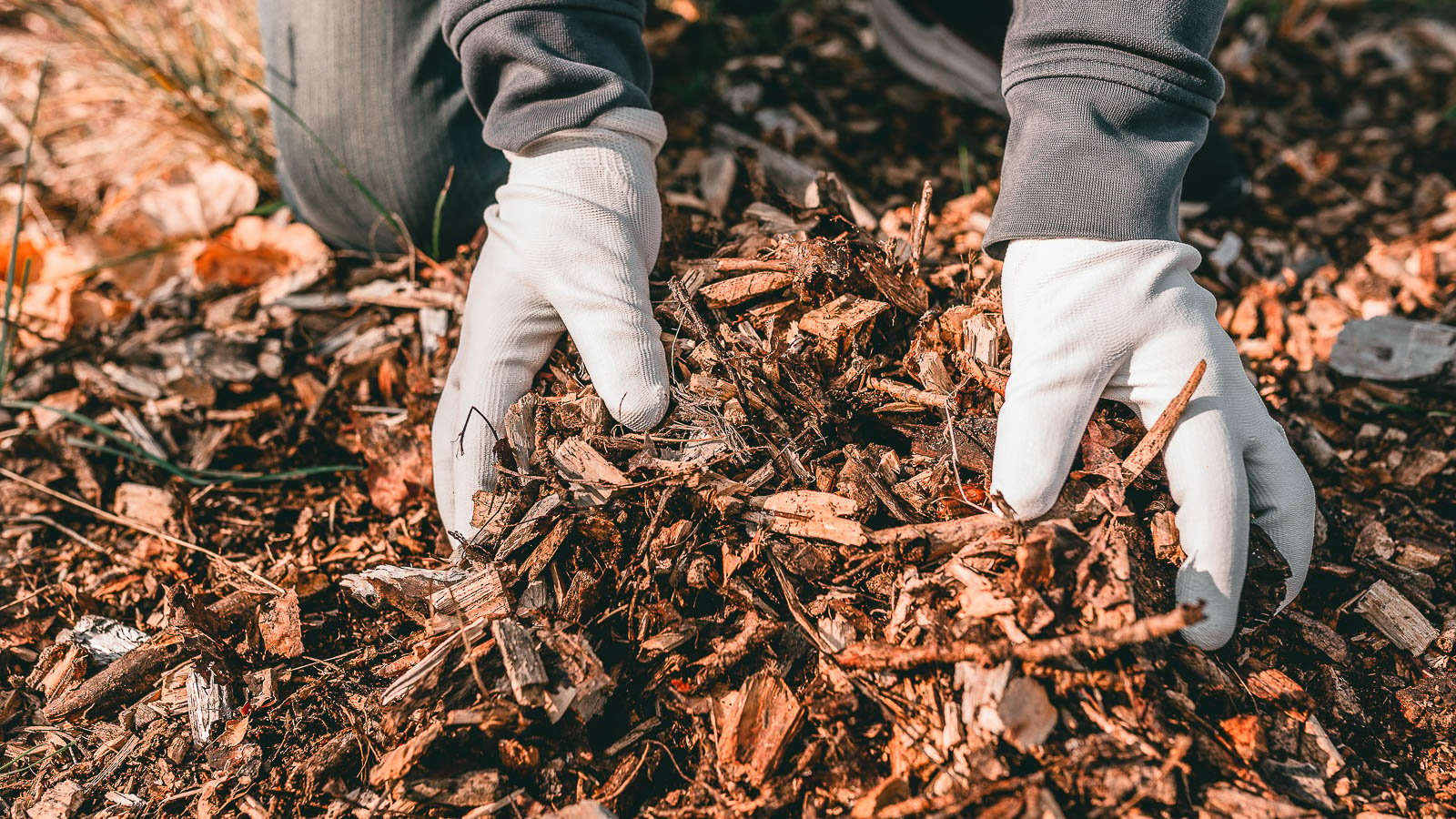
Beautyberry doesn’t require extra fertilization as long as the soil is organically rich. You can enhance your soil without added fertilizers by mulching annually with your choice of compost. As the compost breaks down, it releases nutrients into the soil and feeds your plants enough to help them thrive.
Maintenance
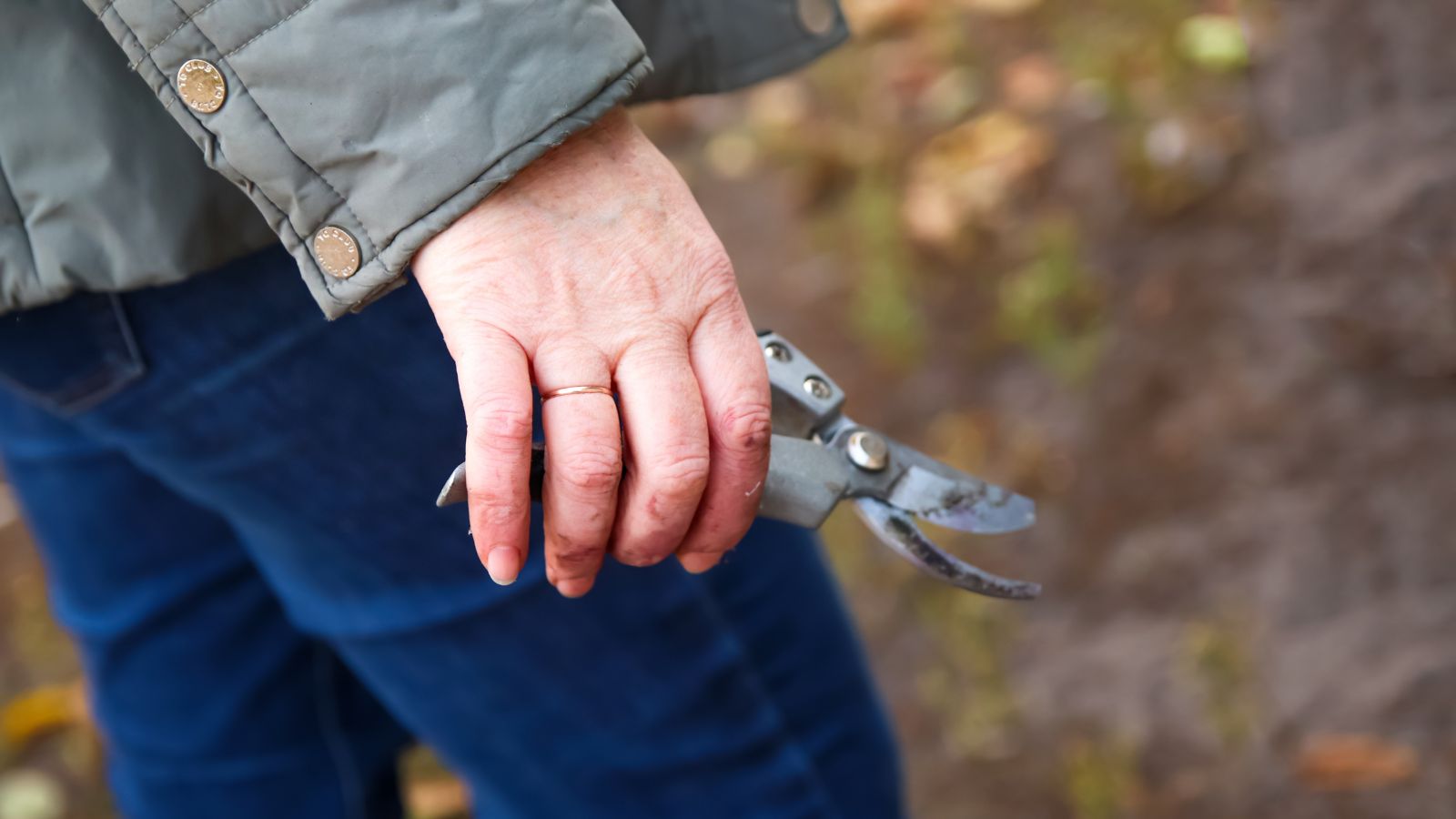
Beautyberry plants don’t require much maintenance. Pearl Glam® is a compact shrub that blooms on new wood. Pruning is optional but if you decide to prune, save this task for spring. In the colder zones of its range, Pearl Glam® may die back in the winter. In this case, wait until spring to see where the new foliage emerges and prune off dead branches that show no signs of life.
Garden Design
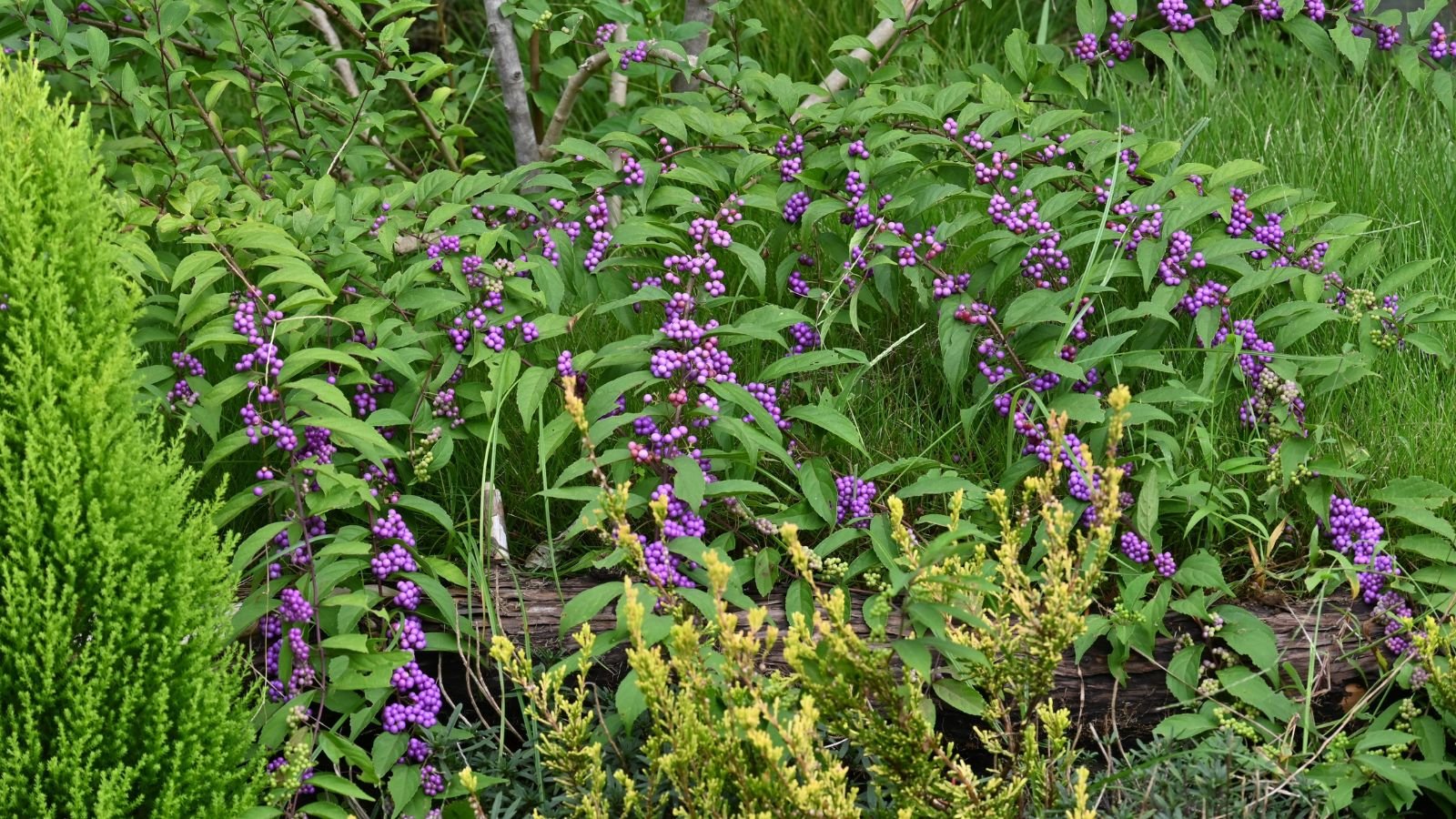
This is a versatile shrub that fits right into your landscape design. Do you want to support pollinators and welcome birds with an abundance of bird-friendly fruits? Add Pearl Glam® to your wildlife garden.
Would you like to create a low shrub border at the edge of your garden? Incorporate some beautyberry plants for their compact nature and showy curb appeal. Would you like to enhance your fall and winter garden with long-lasting color? Pearl Glam® has you covered with its bright berries that persist well into winter.
Whether you have a large landscape or limited space, you’ll probably find a use for this appealing shrub. You won’t want it growing in an unseen back corner but rather right up front and center because you’ll definitely want to see it.
Patio gardeners take note, Pearl Glam® beautyberry is a great choice for a container garden! Plant this lovely little shrub in a large sturdy container so you can appreciate it just about anywhere.
Varieties
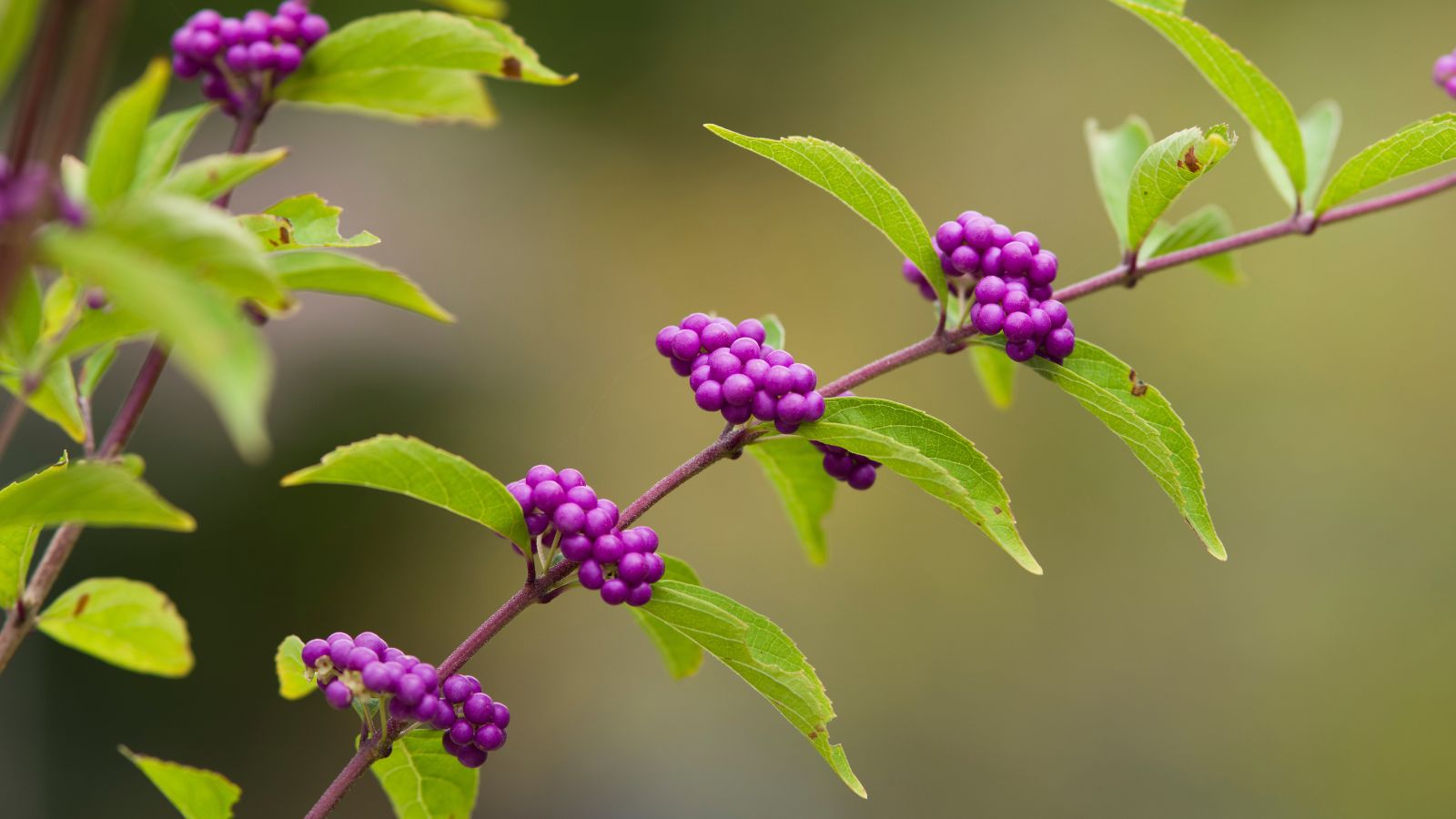
American Beautyberry, Callicarpa americana
The American beautyberry is native to the central and southeastern United States and south into Mexico and the Caribbean islands. This beautiful native shrub loves warm and humid conditions and is an ideal choice for native gardens of the Southeast.
Clusters of delicate pale pink flowers bloom in the spring and rounded bunches of bright mauve berries ripen late in the season for standout color and excellent wildlife appeal. Several cultivars of this species exist, with a range of berry colors, including pink and white.
Purple Beautyberry, Callicarpa dichotoma
The purple beautyberry is a showy shrub native to Asia. It stays quite compact, especially when grown in full sun, rarely exceeding four feet in height. There are several cultivars of this beautyberry available, including some with white berries.
Bodinier Beautyberry, Callicarpa bodinieri
Bodinier’s beautyberry is a larger shrub native to Asia. It grows up to 10 feet tall and makes an excellent hedge planting. This deciduous shrub has long-lasting berries that persist well after the foliage dies back, so you (and the birds) can really see and appreciate its profusion of bright purple berries.
Mexican Beautyberry, Callicarpa acuminata
The Mexican beautyberry is a heat-loving shrub native to Mexico and Central America. It can grow up to 12 feet tall and is hardy in zones 8 – 10. This beautyberry species has long, gracefully arching branches that give it a sprawling look, perhaps best suited for larger areas. Mexican beautyberry has attractive dark maroon fruits.
Wildlife Value
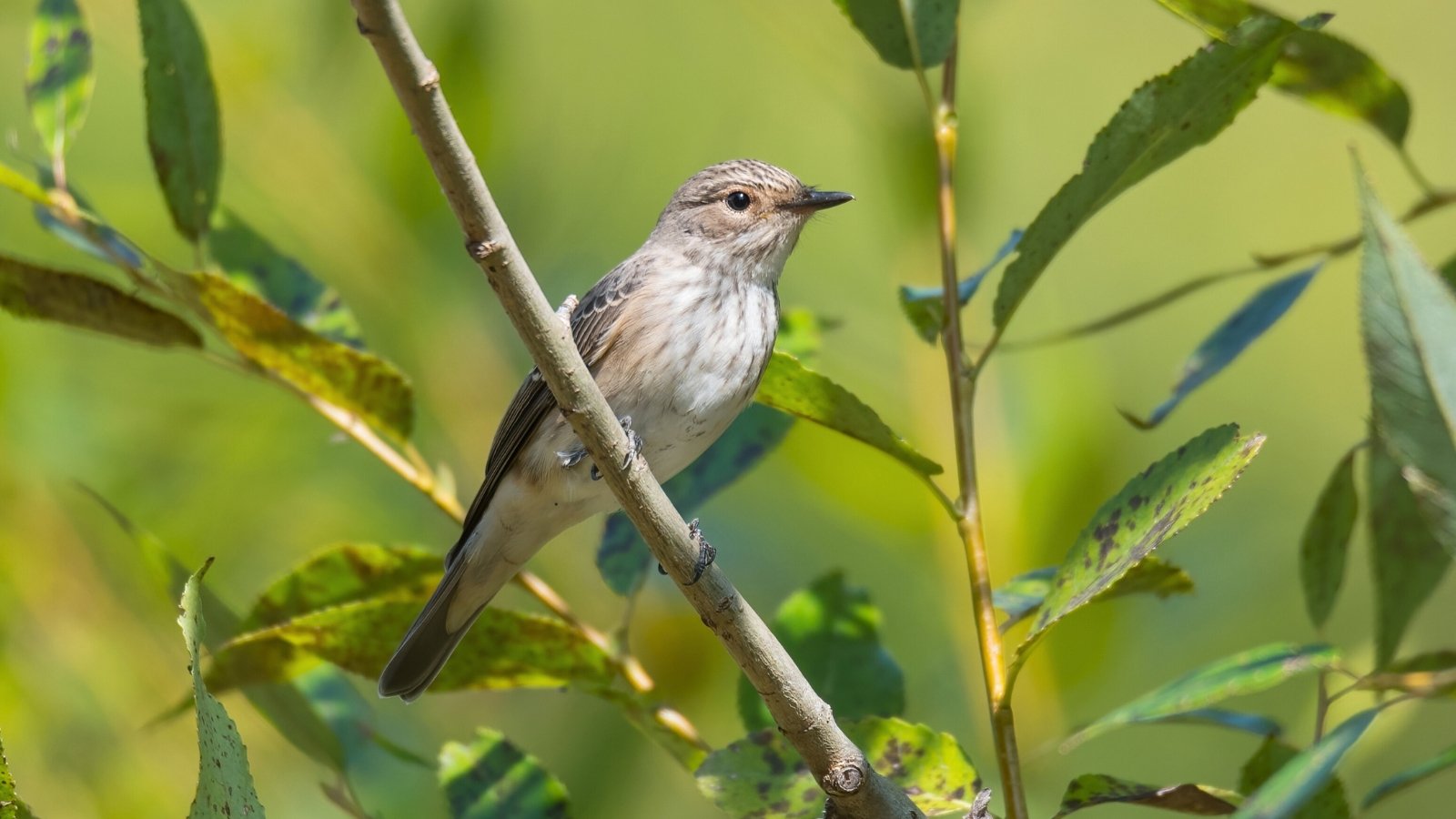
All species of beautyberry, including Pearl Glam®, have significant wildlife value. A wide variety of pollinators visit the spring-blooming flowers making this a wonderful shrub for bees and butterflies. Birds and other small fruit-eating animals enjoy the abundance of berry-like fruits.
When the berries are ripe in the fall, fruit-eating birds sit on the branches to gulp whole berries. If you enjoy watching birds, plant a beautyberry where you can see it and watch the wildlife that stops by for a snack.
Common Problems
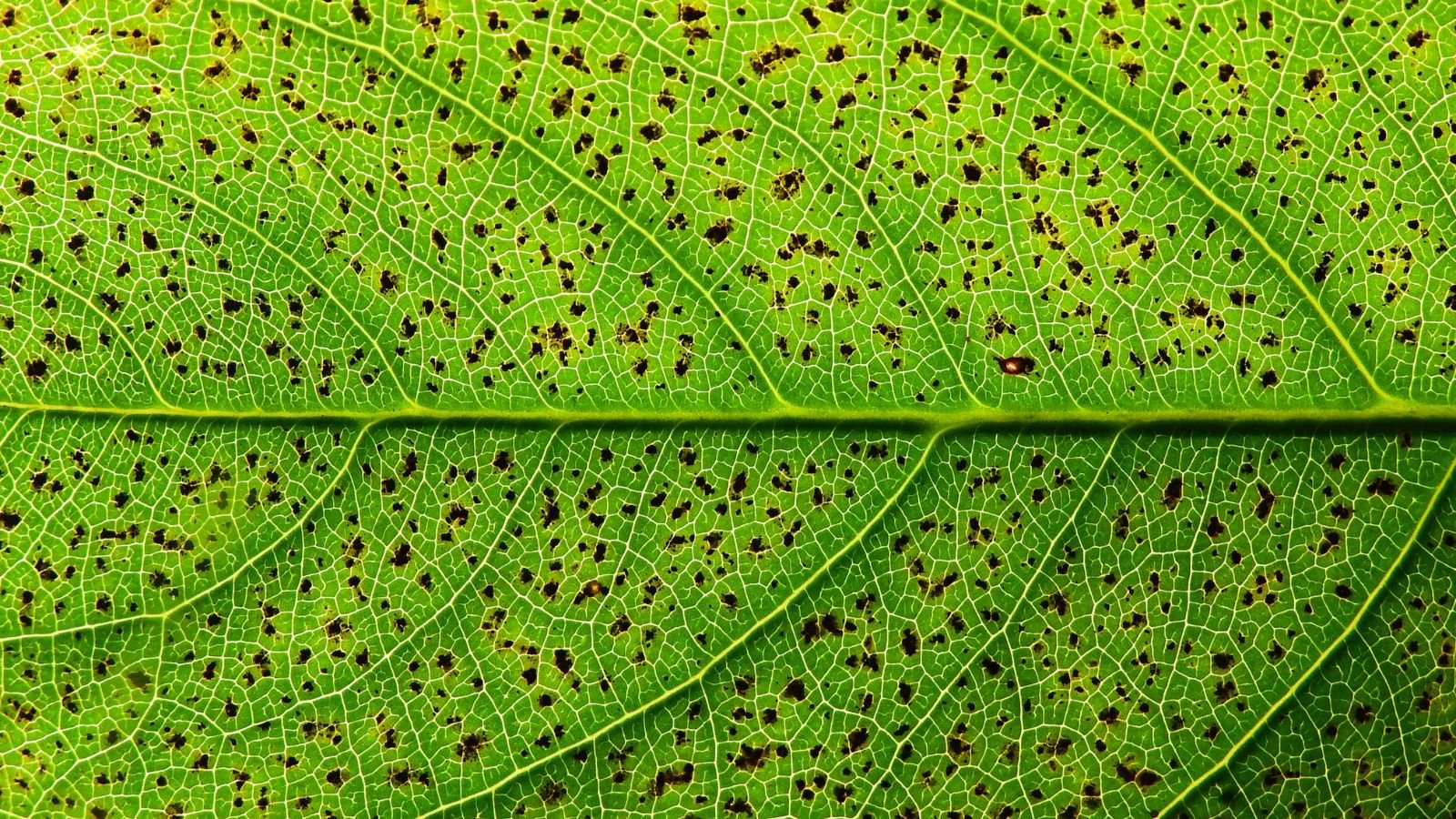
Pearl Glam® and other beautyberries are generally trouble-free. Insect pests don’t bother these plants or cause major problems. Leaf spot is an occasional nuisance but doesn’t cause lasting damage.
Leaf spot is a fungal or bacterial infection that causes brown or grey dead spots on the leaves. This is a common problem that affects almost any type of plant, particularly in wet environments where leaves are repeatedly exposed to dampness and humidity.
Preventive measures for leaf spot include growing plants in a way that aids air circulation. Avoid dense clusters of leaves and remove weeds from around your garden plants to encourage airflow between plants. Remove damaged leaves as they appear.
Another way to combat leaf spot is to avoid unnecessary watering of the foliage. If you need supplemental watering, use a soaker hose or watering wand to aim the water flow toward the roots rather than the leaves.
Frequently Asked Questions
In a full-sun location in a relatively warm climate, try rosemary (Salvia rosmarinus) for its fragrant evergreen foliage. To create a feeding frenzy for the birds, try growing winterberry holly (Ilex verticillata) for its long-lasting profusion of bright red berries. Virginia sweetspire (Itea virginica) is a complimentary small shrub that has showy late spring flowers that are irresistible to pollinators. If you’d like to create an edible landscape, grow a blueberry bush (Vaccinium spp.) and enjoy its sweet edible fruits.
No. Beautyberry is not an aggressive or invasive plant. It won’t outcompete neighboring plants or create dense thickets. Native beautyberry plants will sparingly reseed themselves, especially as birds eat and redistribute the seeds. Pearl Glam®, however, doesn’t readily reseed itself so you shouldn’t see them popping up all over your yard.
Beautyberry fruits are technically edible and non-toxic, but they aren’t actually good to eat. It’s probably best to leave them for the birds.

